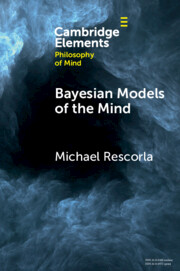Element contents
Bayesian Models of the Mind
Published online by Cambridge University Press: 30 January 2025
Summary
Keywords
- Type
- Element
- Information
- Series: Elements in Philosophy of MindOnline ISBN: 9781108955973Publisher: Cambridge University PressPrint publication: 30 January 2025
References
- 1
- Cited by

